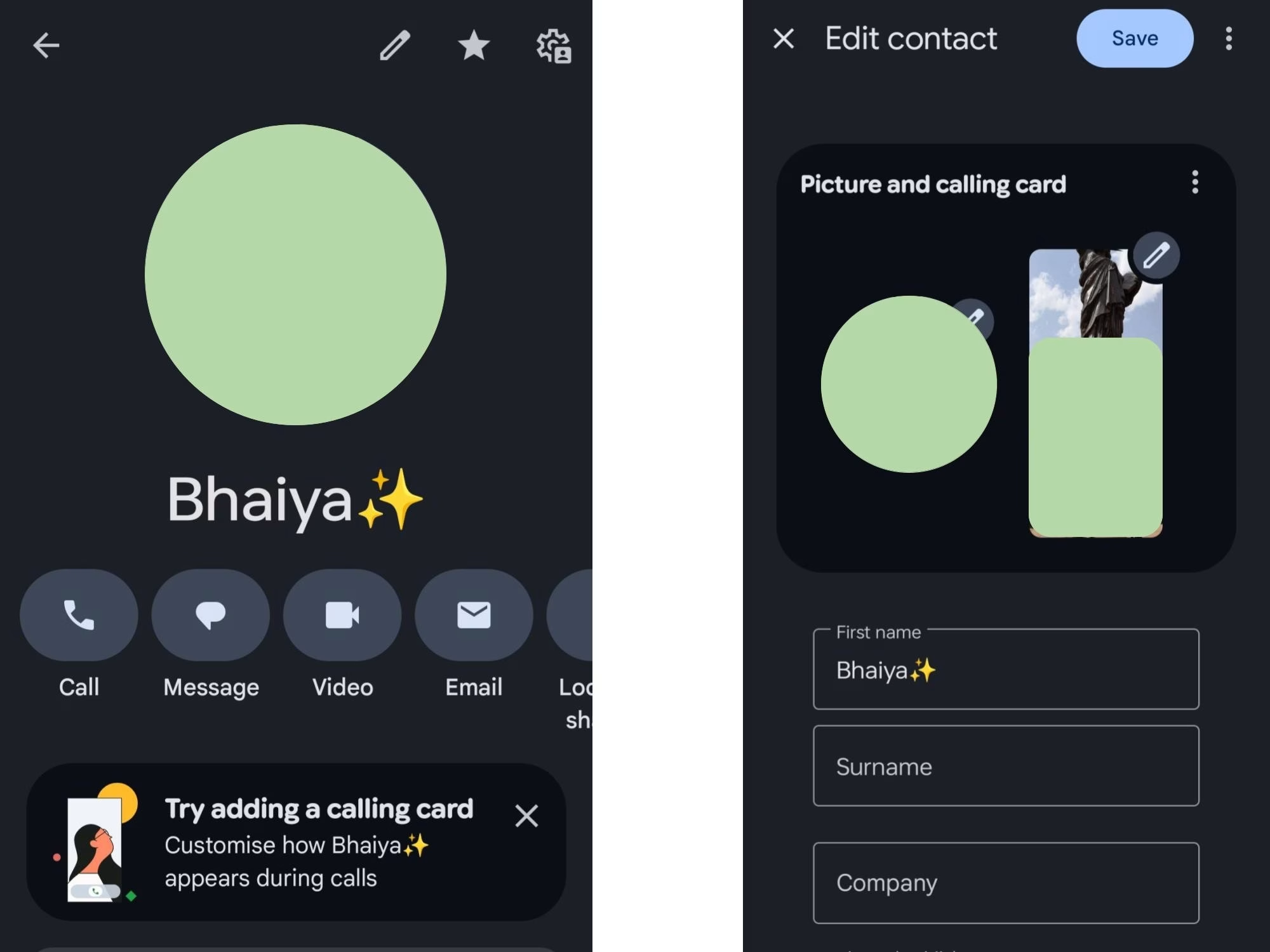Google's Calling Cards: What's Really Rolling Out (And What Isn't Yet)
There’s been a fair bit of buzz recently about Google's "Calling Cards" feature making its way into the Contacts and Phone apps. And for good reason, too! Who doesn't want a more personalized, visually engaging call experience? But before we all get too excited and start designing our perfect incoming call screens, it's crucial to clarify the current status of this anticipated feature. While related updates are indeed rolling out, the full Calling Cards functionality isn't yet widely available to everyone. It's more of a staged development and testing phase, paving the way for what's to come.
This isn't just some minor tweak; it's a significant visual overhaul for how we interact with incoming calls on Android. Think of it as Google's answer to Apple's Contact Posters, allowing users to create custom, full-screen profiles that appear when they call someone. Pretty neat, right?
The Feature Unpacked: What Are Calling Cards?
At its core, Google's Calling Cards feature aims to transform the mundane incoming call screen into something far more dynamic and personal. Imagine your friend calling, and instead of just a name and number, you see a custom image, perhaps a stylized photo of them, or even a unique background they've chosen, filling your entire screen. That's the vision.
These "cards" are essentially customizable caller ID profiles. Users will be able to set up their own unique full-screen display within the Google Contacts app. This includes choosing a profile picture, selecting a background, and potentially customizing fonts or other visual elements. The idea is to make calls more visually appealing and to give users more control over their digital identity when they connect with others. It’s about adding a touch of personality to every interaction, making it a bit less generic.
Design Philosophy and User Experience
The integration of Calling Cards ties directly into Google's broader Material You design language, specifically the Material 3 Expressive redesign. This isn't just about aesthetics; it's about creating a cohesive and intuitive user experience across all Google apps. The recent updates to the Google Contacts app, which brought a fresh Material 3 look with rounded corners and dynamic theming, are a clear precursor to Calling Cards. These visual enhancements are laying the groundwork, ensuring that when Calling Cards do arrive, they'll feel right at home within the updated Android ecosystem. It's all part of a larger push for a more personalized, fluid interface.
Current Rollout Status: Development, Not Wide Release (Yet!)
The first whispers of Calling Cards emerged from APK teardowns back in late June 2025. This is how tech enthusiasts and experts often uncover features that Google is actively developing but hasn't officially announced or released. These teardowns revealed code snippets and UI elements pointing to this customizable caller ID functionality. Since then, subsequent updates to both the Google Contacts app and the Google Phone app have been observed. For instance, the Phone app recently received a significant Material 3 redesign, particularly noticeable on Pixel devices and some Android 16 beta builds. This redesign is essential infrastructure for a feature like Calling Cards to function seamlessly.
So, while you might be seeing a refreshed Contacts app or a new look for your Phone app, don't be surprised if the option to create your own Calling Card isn't there yet. It's a bit like building a house; Google's been putting in the foundation and framing with these Material 3 updates, and the Calling Cards feature is the fancy new interior design that's still being perfected before the grand unveiling. The latest reports, even from just hours ago, confirm the Contacts app redesign is rolling out, but no explicit mention of Calling Cards being live for general users. It's still very much in the "soon" category, likely in beta or limited testing.
Implications and What to Watch For
The eventual widespread rollout of Calling Cards could significantly impact how we perceive and engage with phone calls. For individuals, it offers a new avenue for self-expression and a way to make their calls more recognizable and memorable. For businesses, imagine the branding opportunities! A company's logo or a specific campaign image could appear on your screen when they call, offering a more professional and engaging touchpoint than a generic number.
This move also highlights Google's continued effort to bring Android's user experience on par with, or even surpass, competitors. Apple introduced a similar feature with iOS 17, and Google's iteration seems poised to offer comparable, if not more, customization options. It's a healthy competition that ultimately benefits the end-user. We're seeing a trend towards more personalized, visually rich communication across the board, and Calling Cards fits right into that narrative.
What's next? We should keep an eye on official announcements from Google, perhaps at an upcoming event like a Pixel launch or an Android Developers Blog post. The feature will likely roll out in stages, possibly starting with Pixel devices or those running the latest Android versions, before expanding more broadly. It's a big step towards making our digital interactions feel a bit more human, a little less sterile. And frankly, I can't wait to see what creative "calling cards" people come up with.
